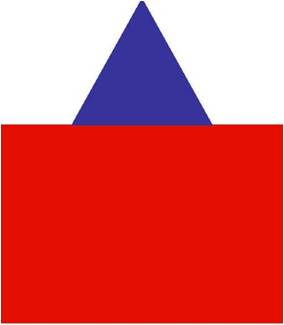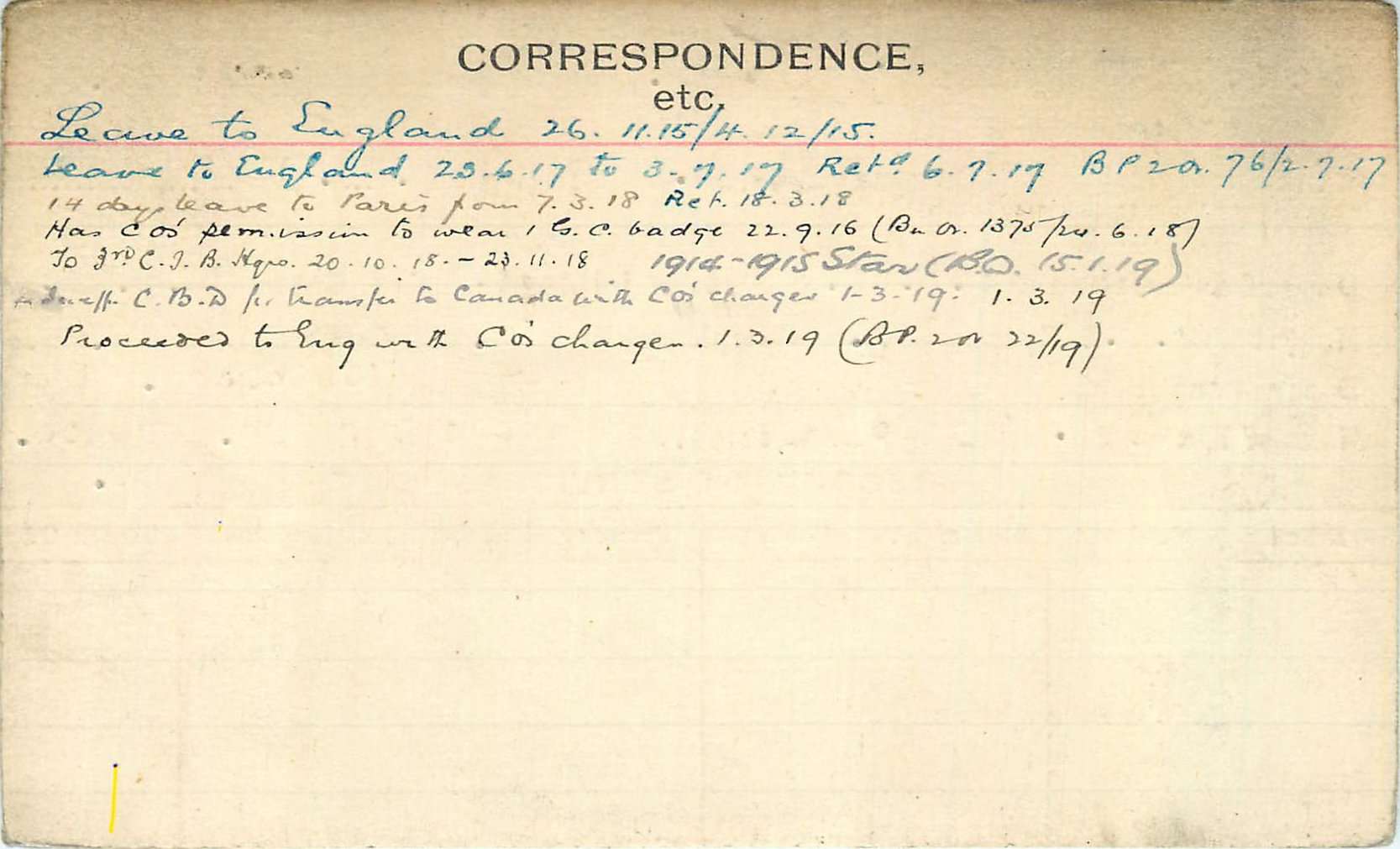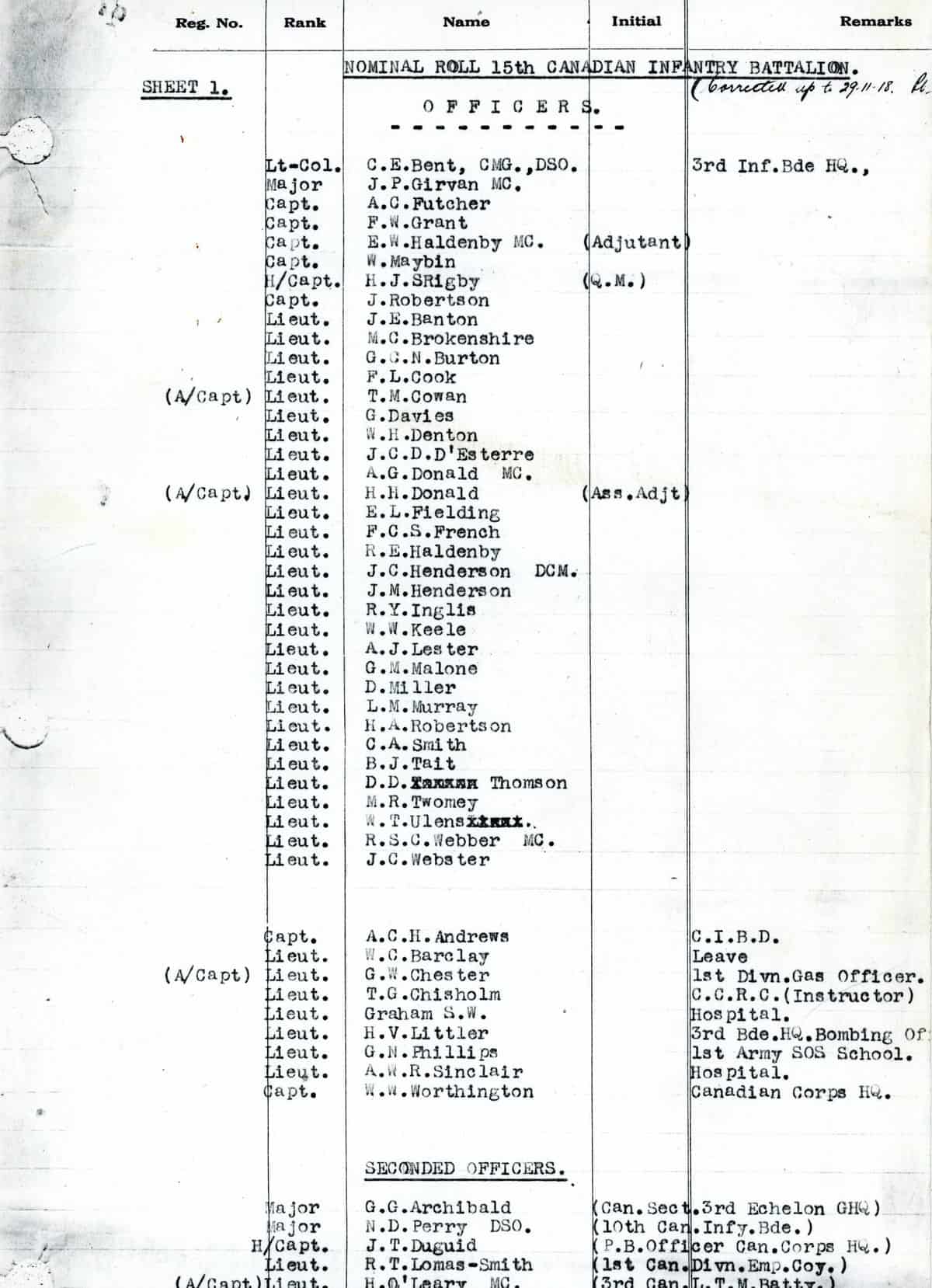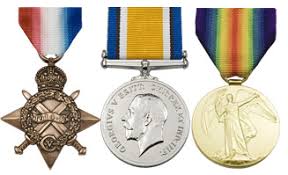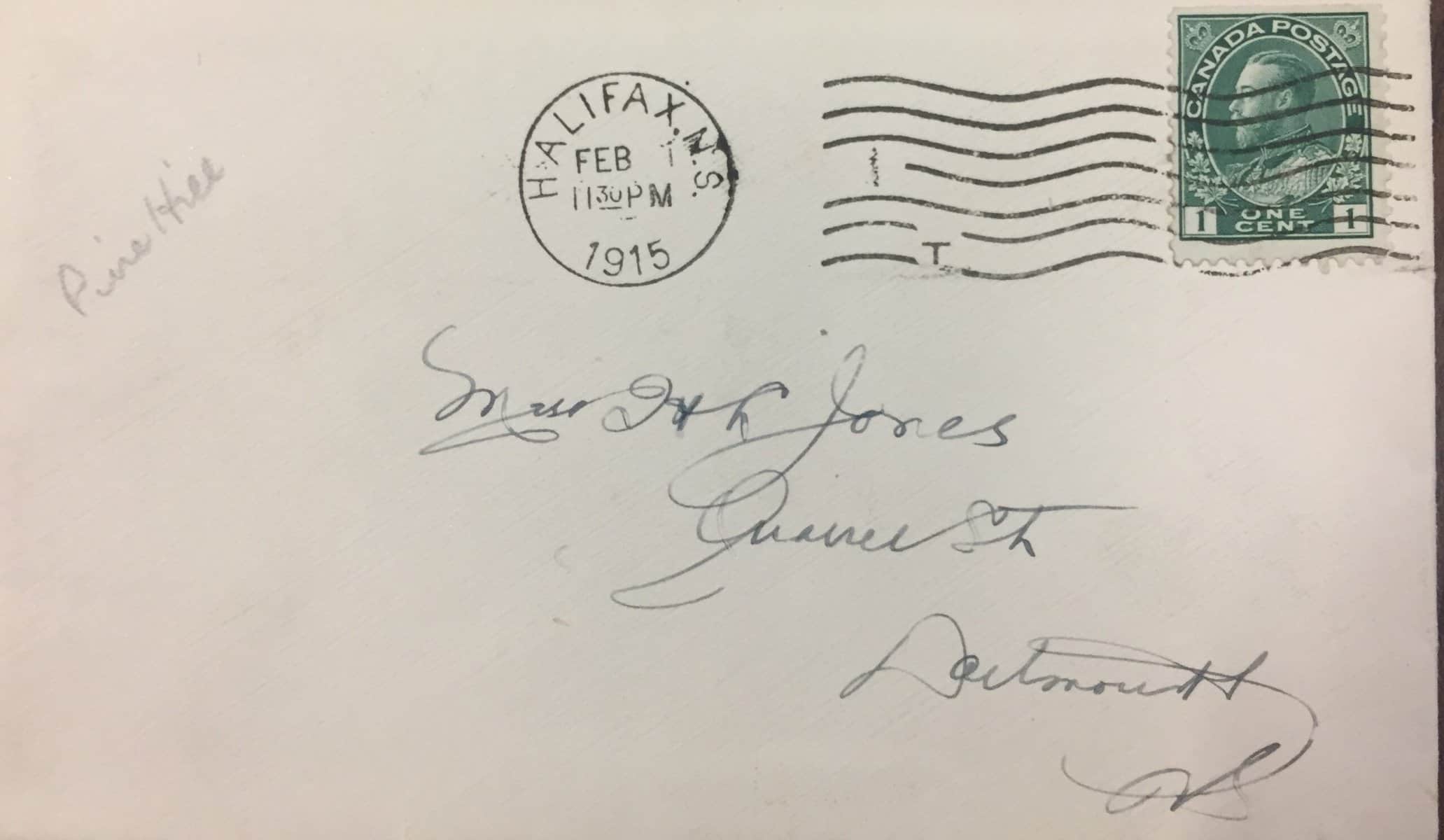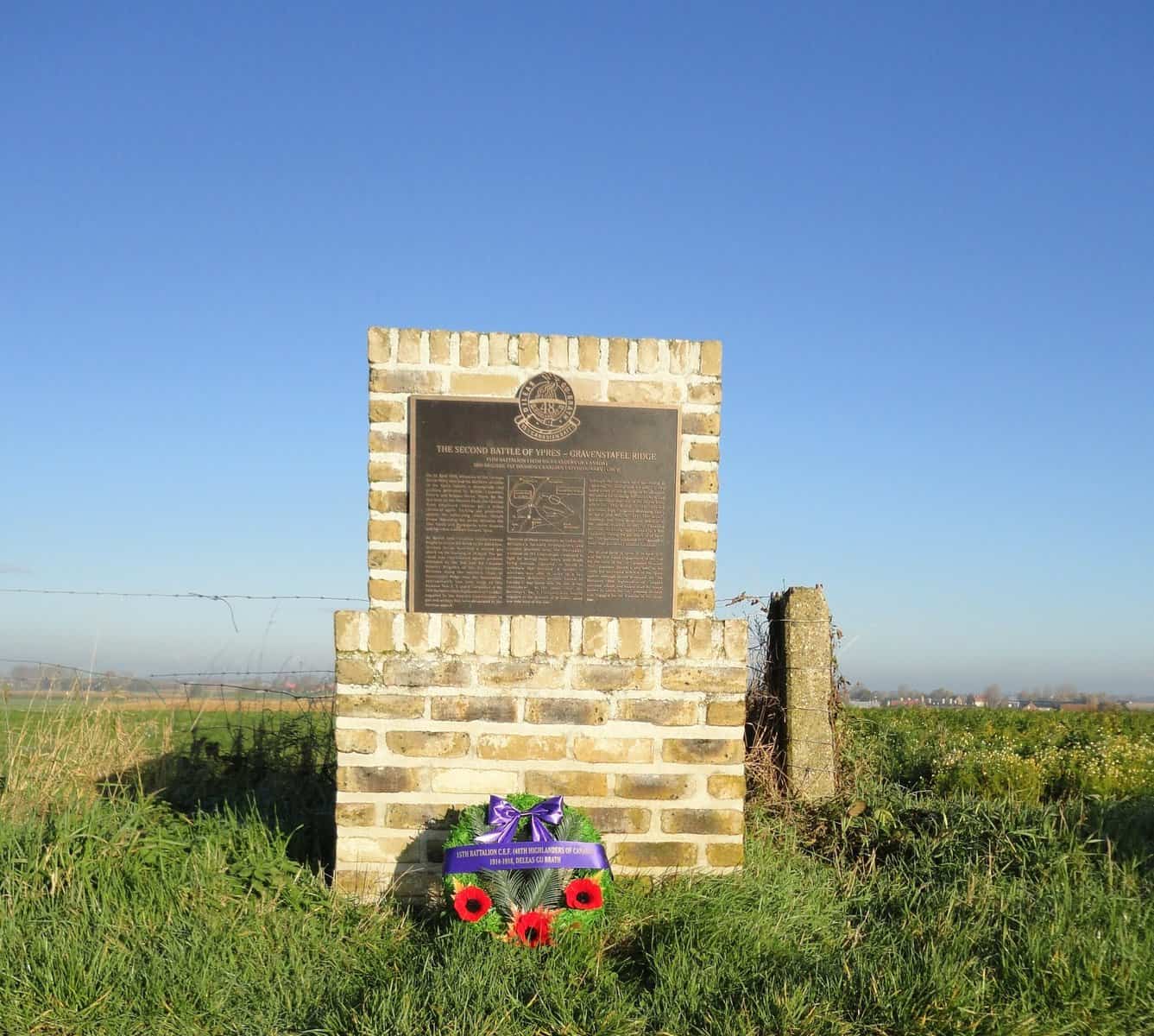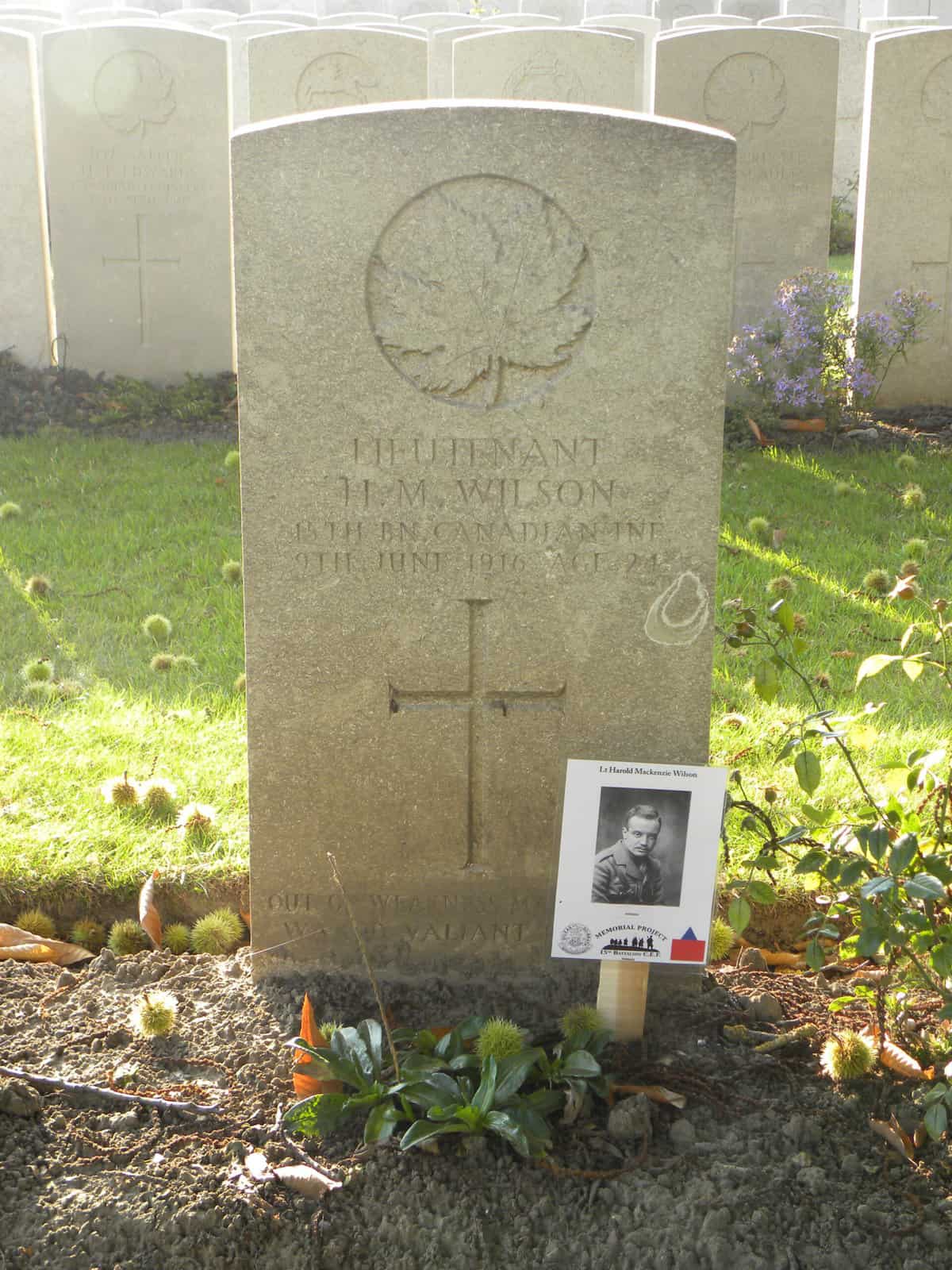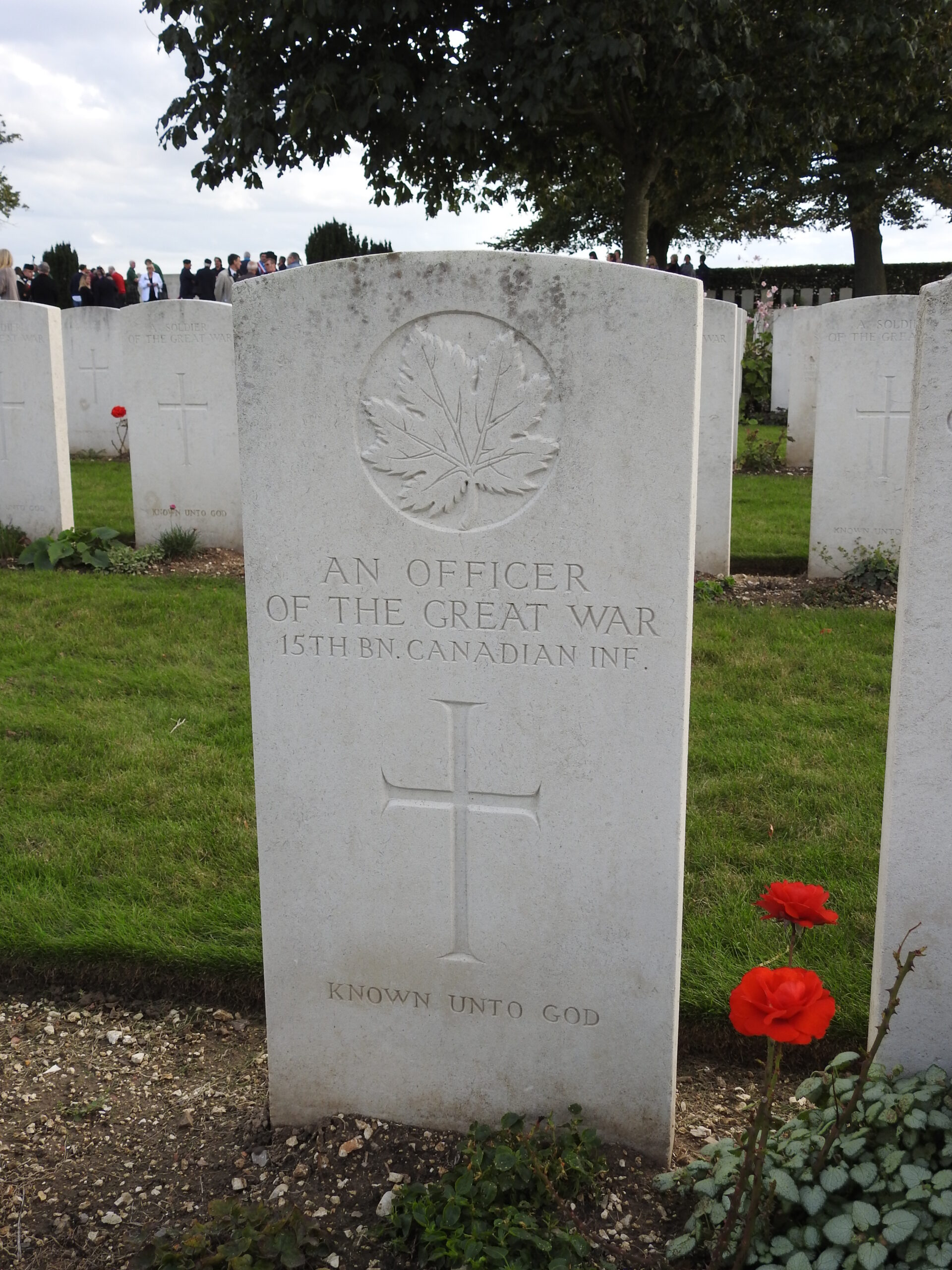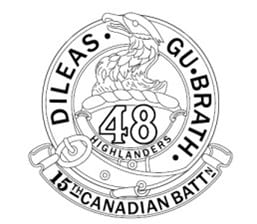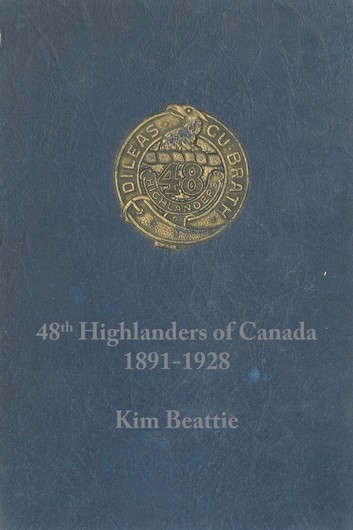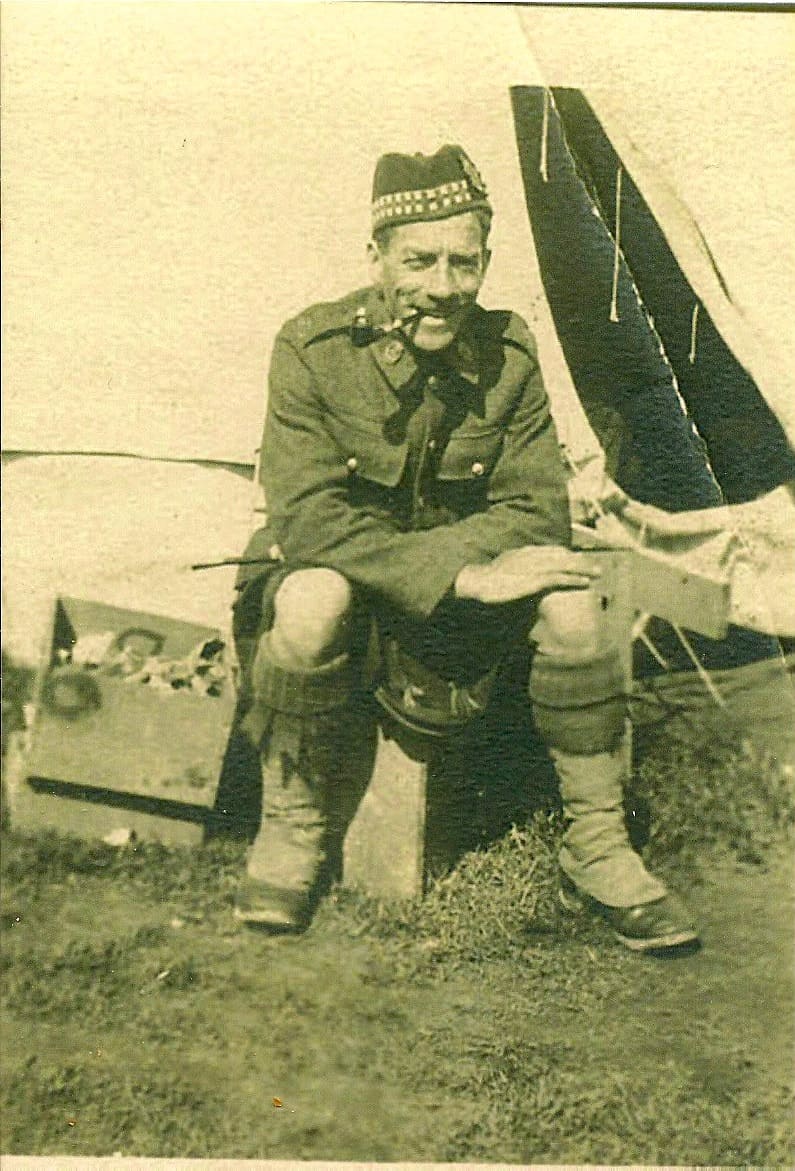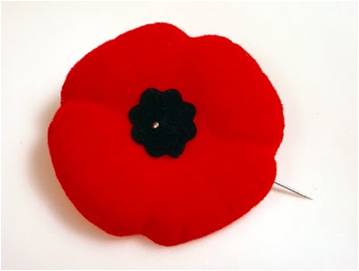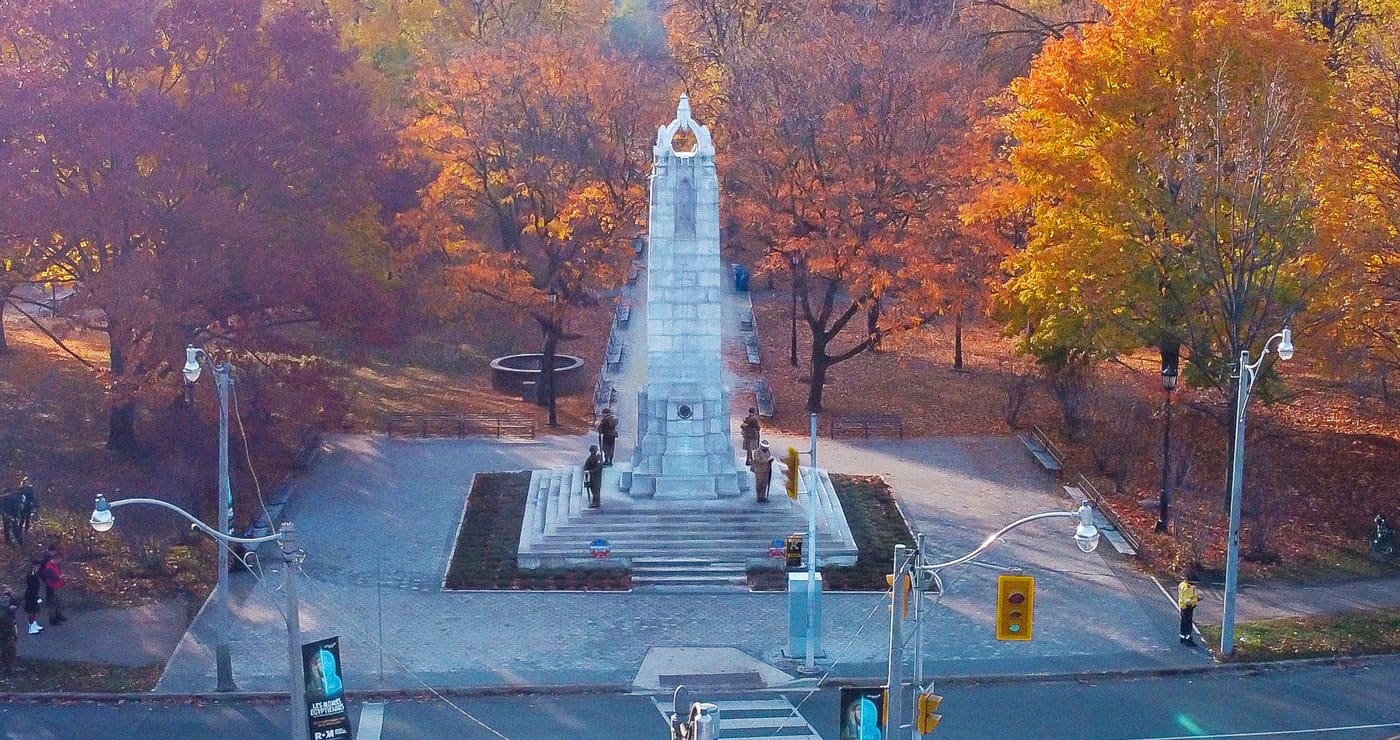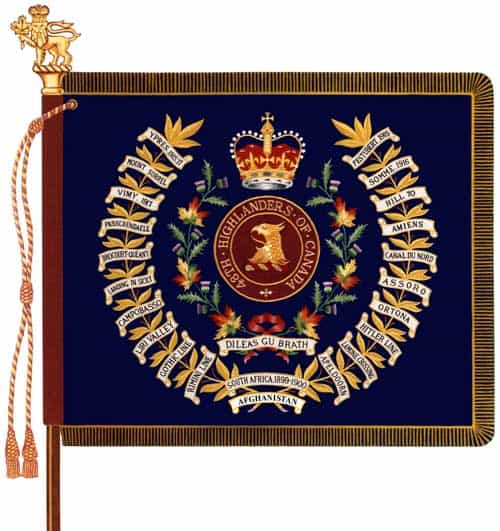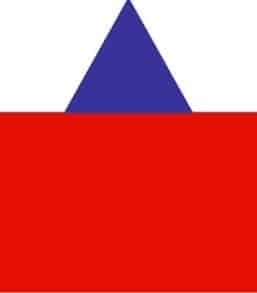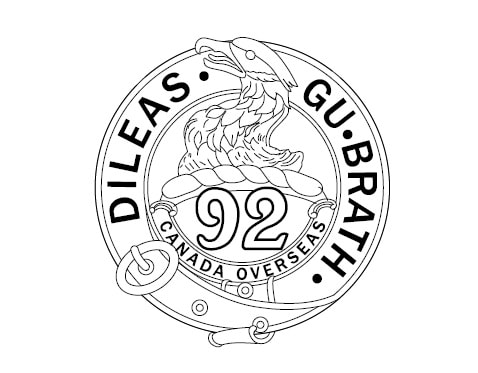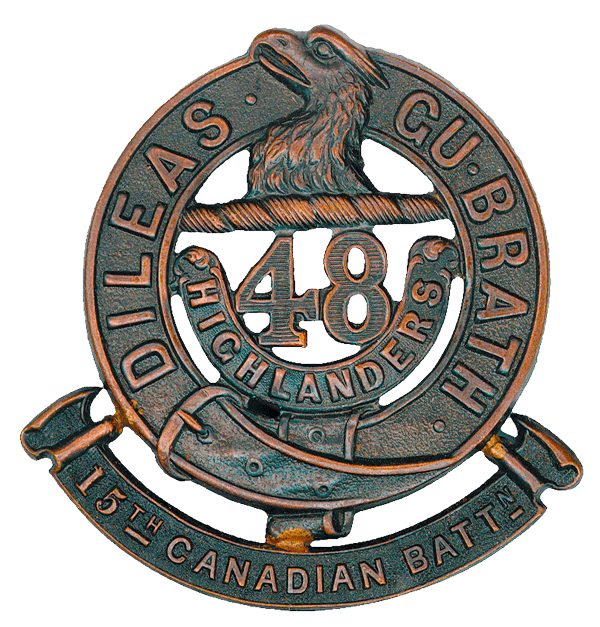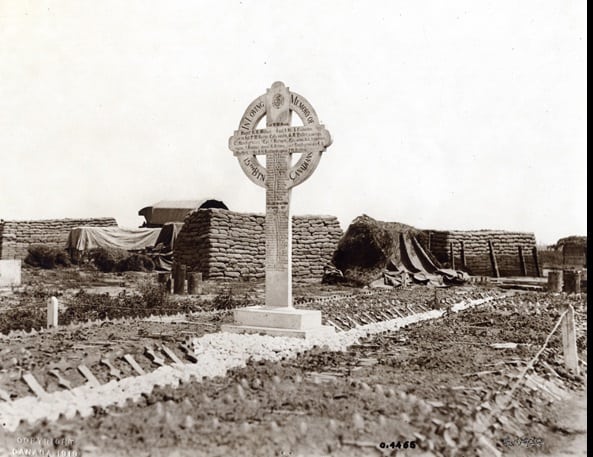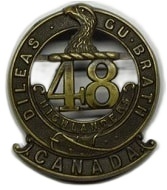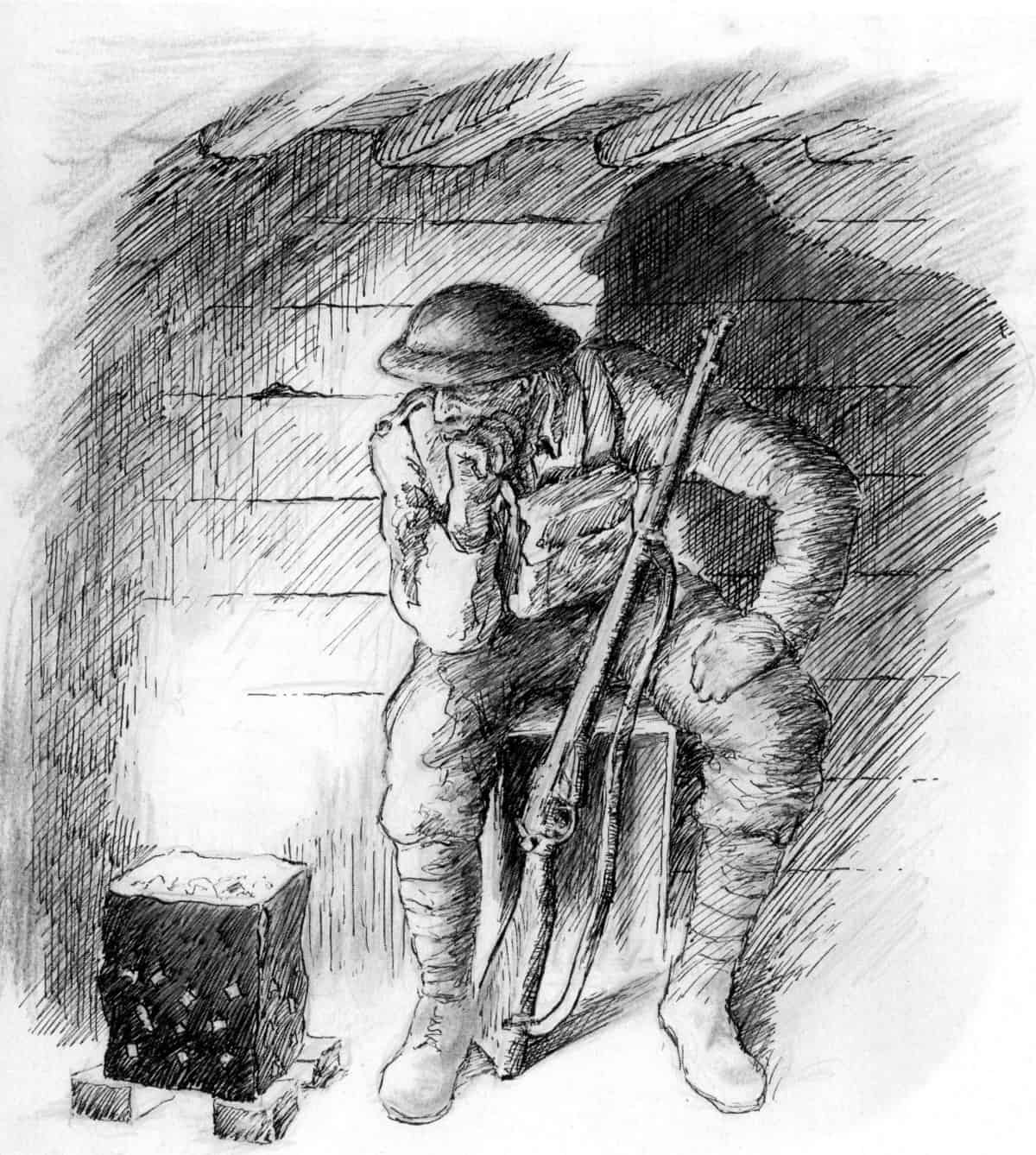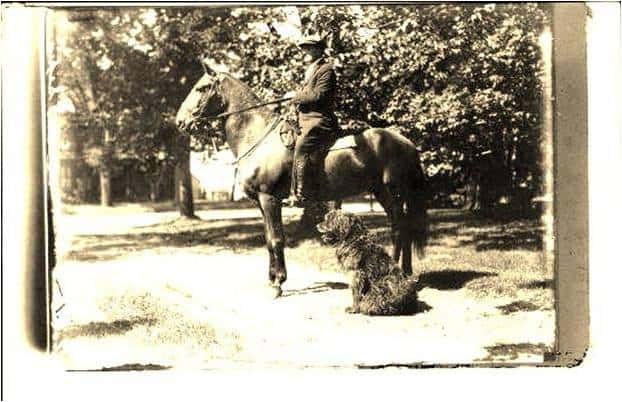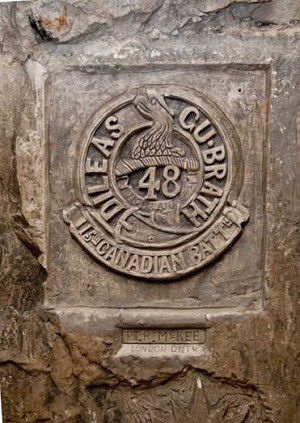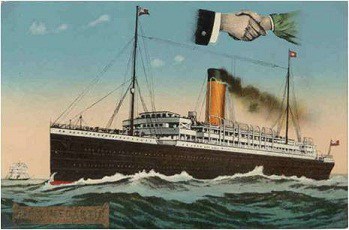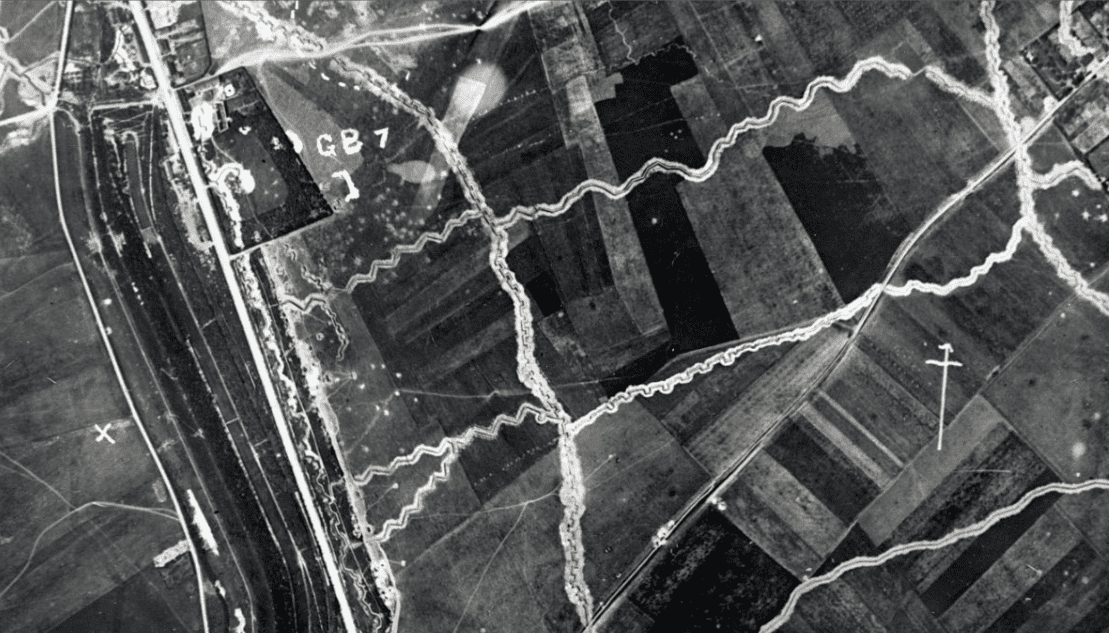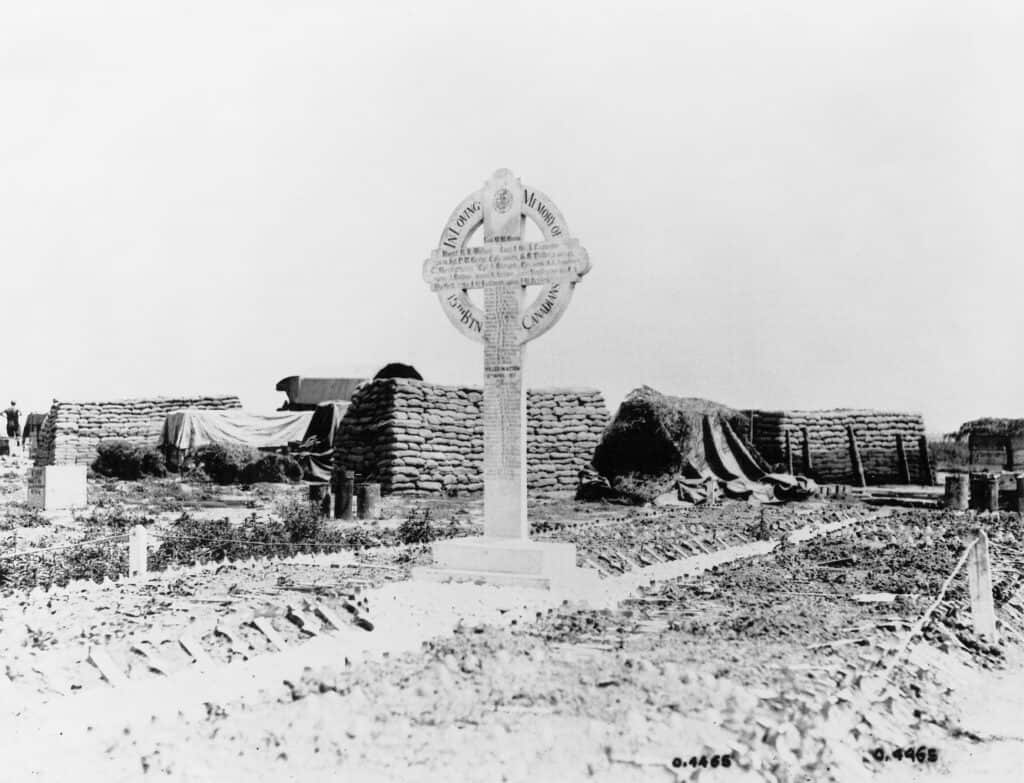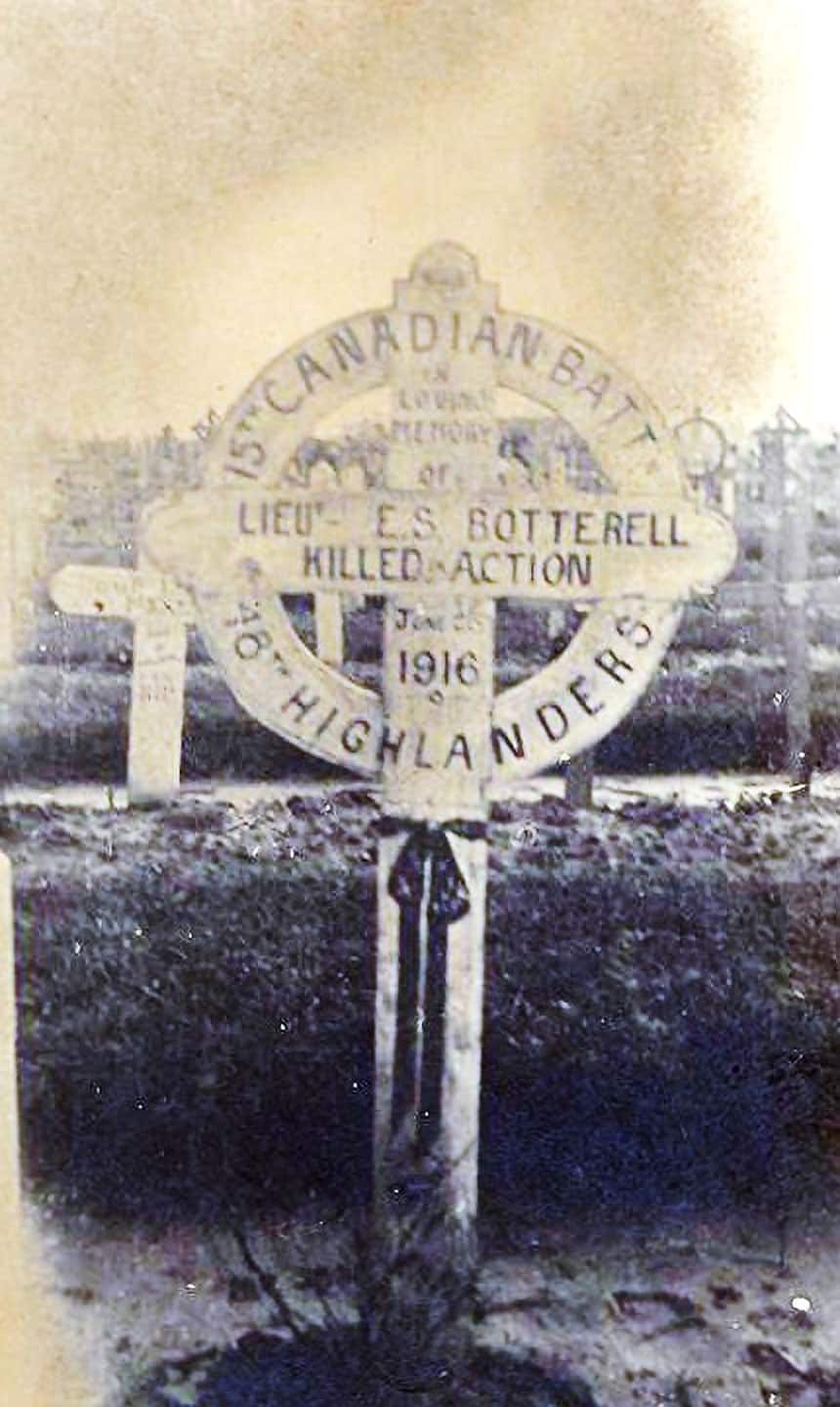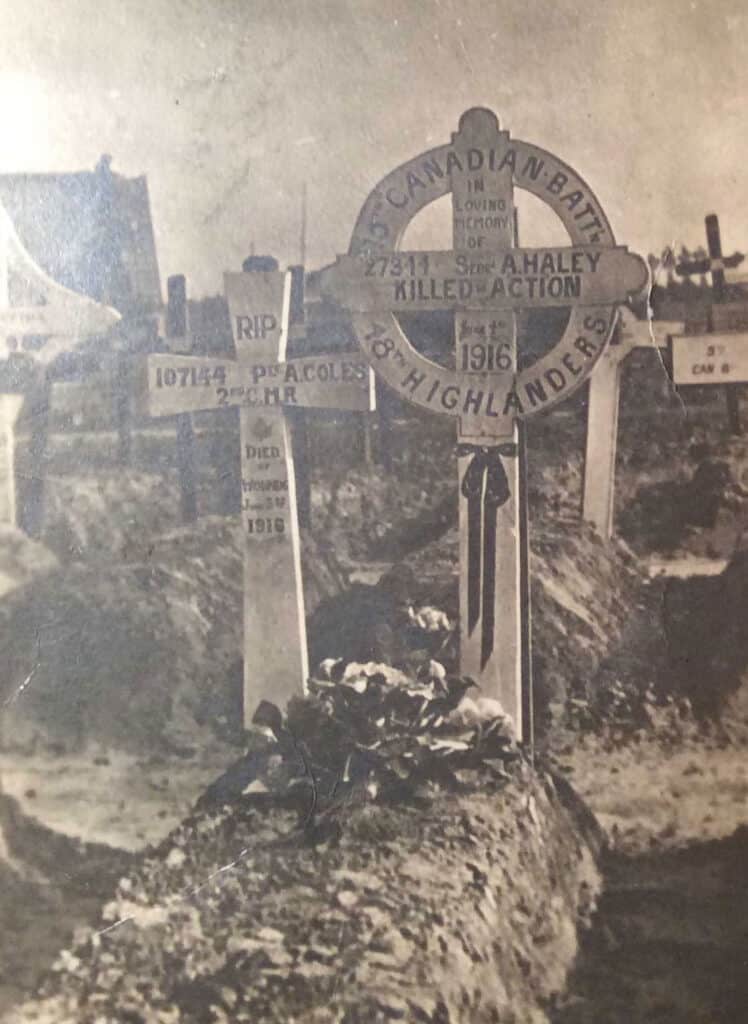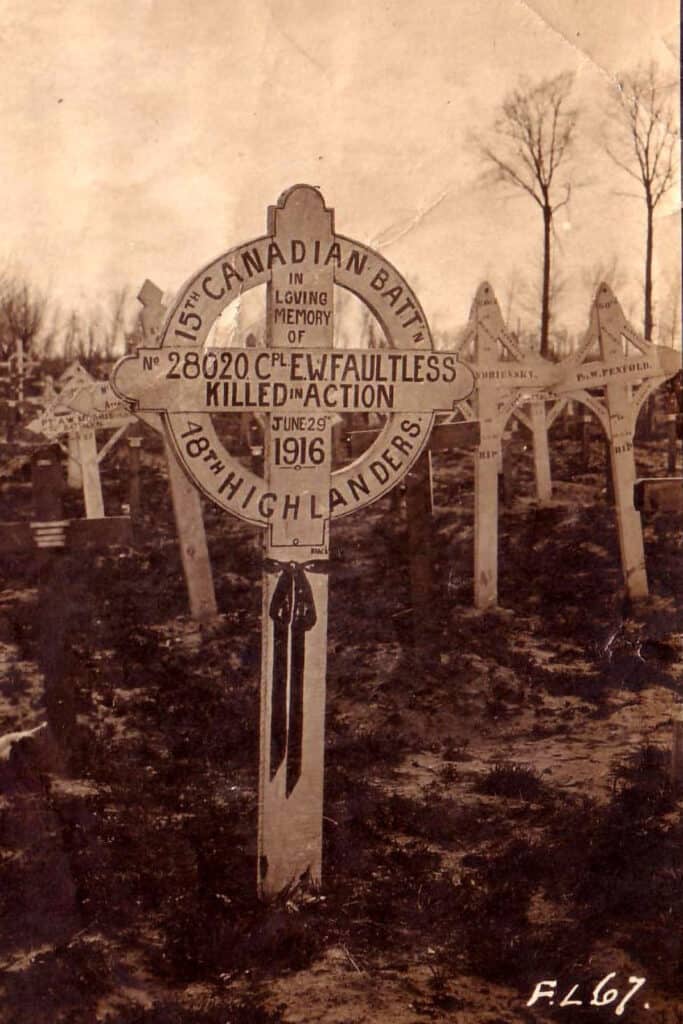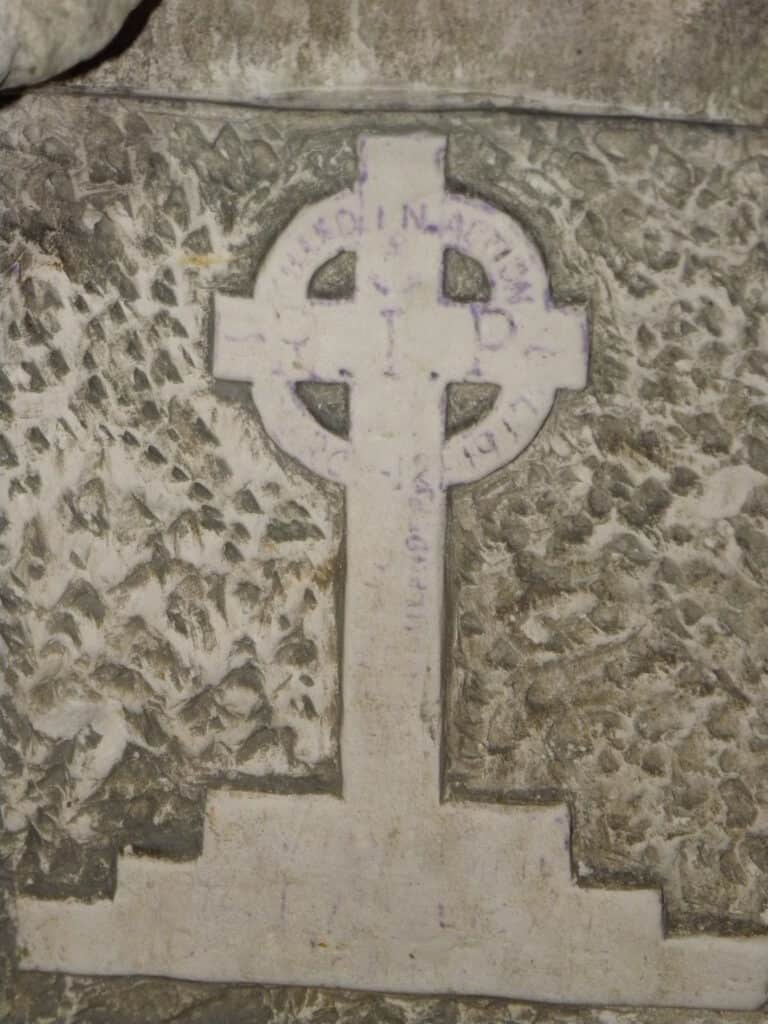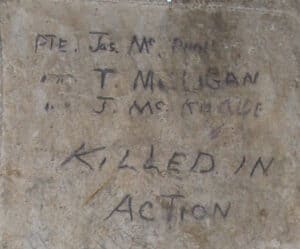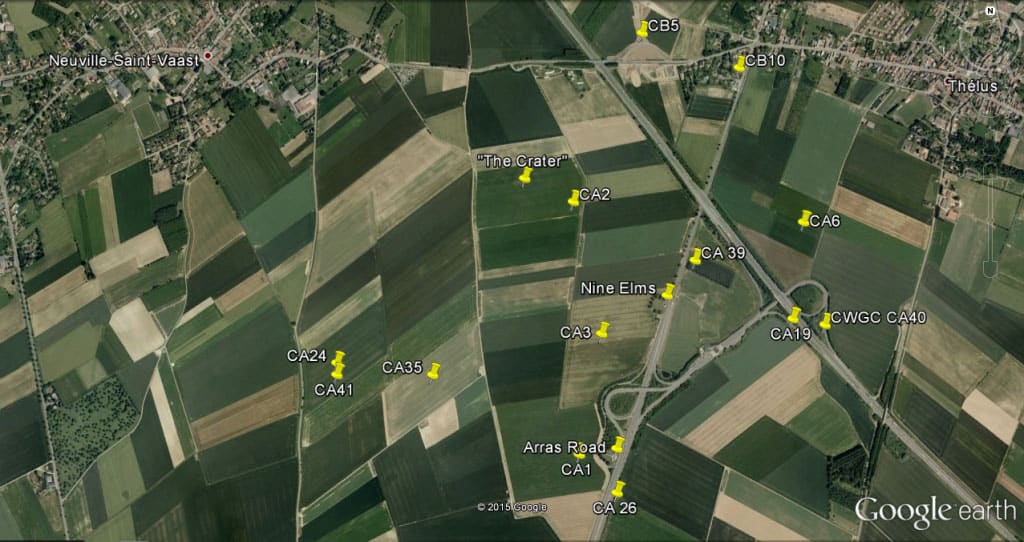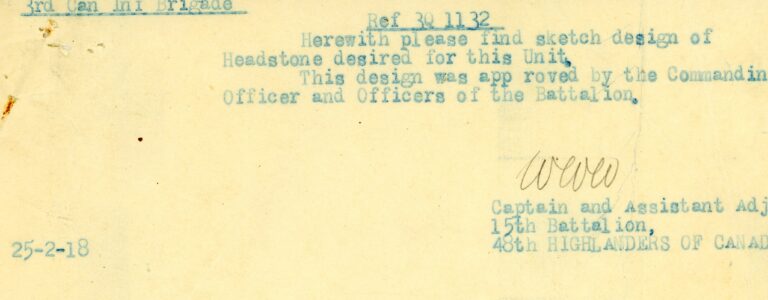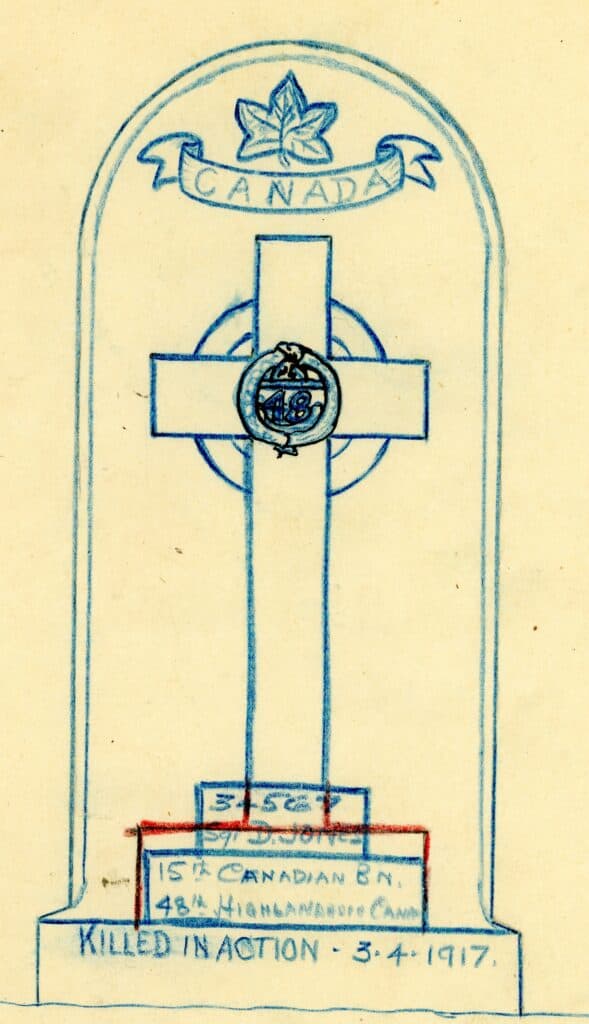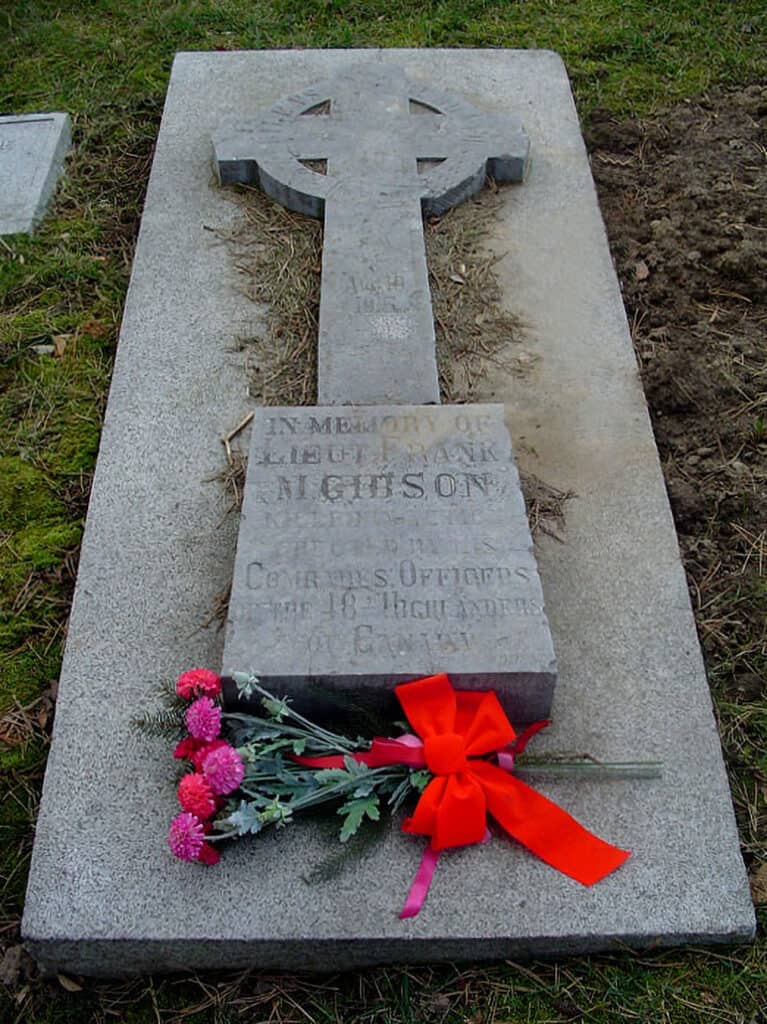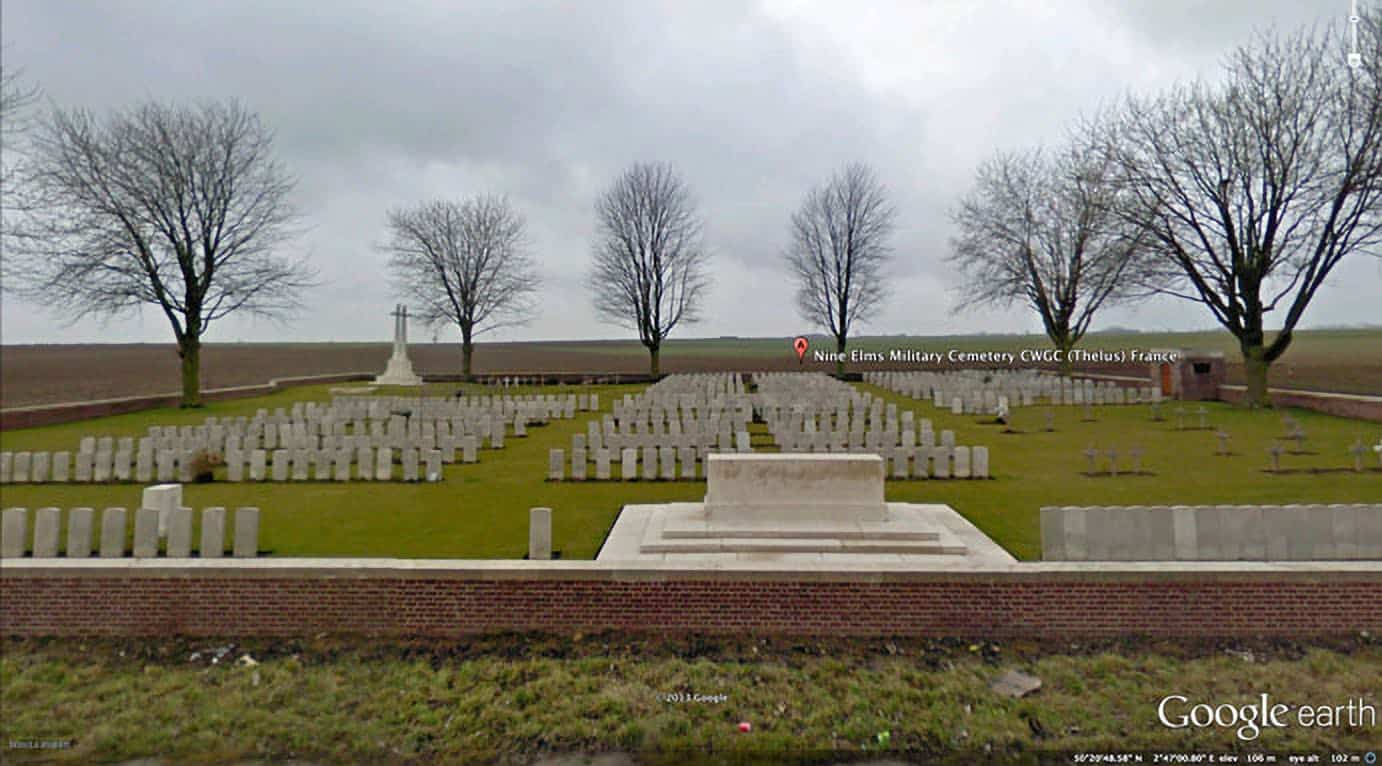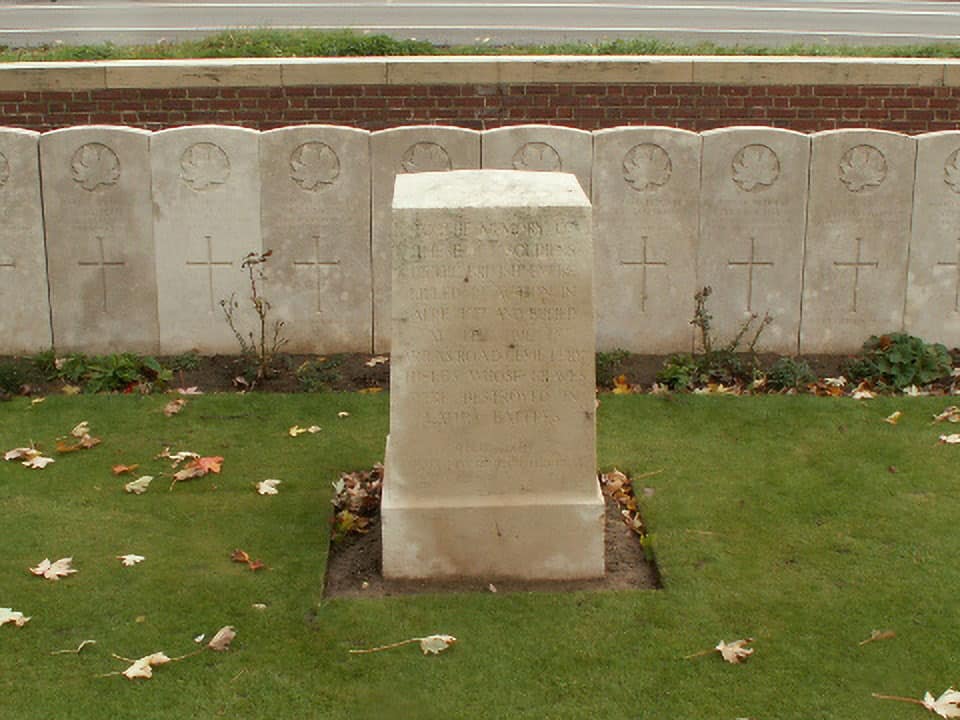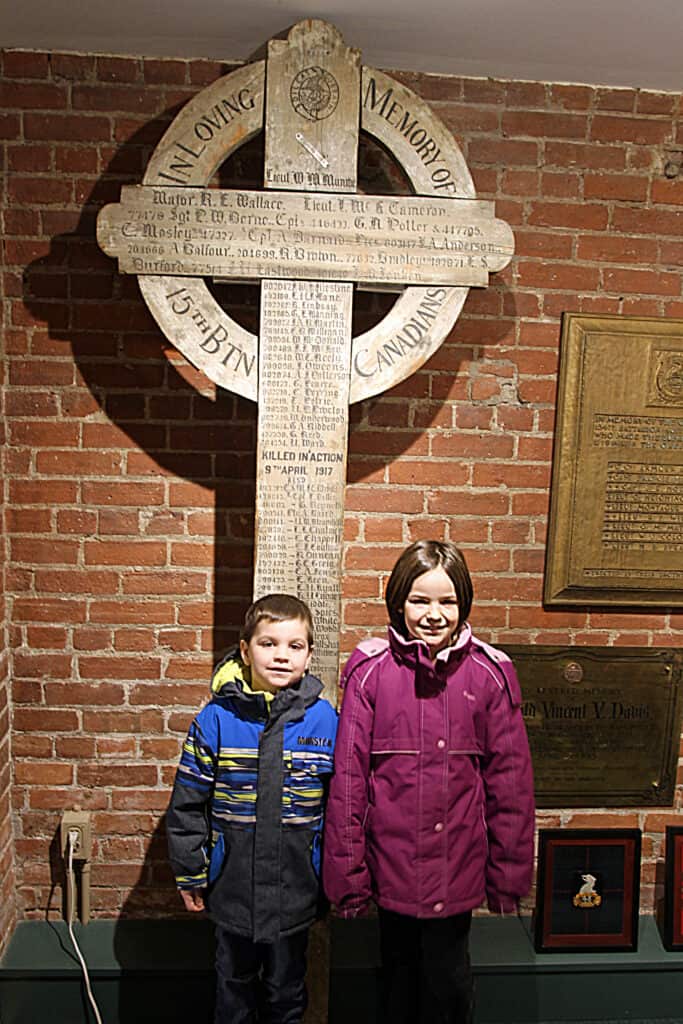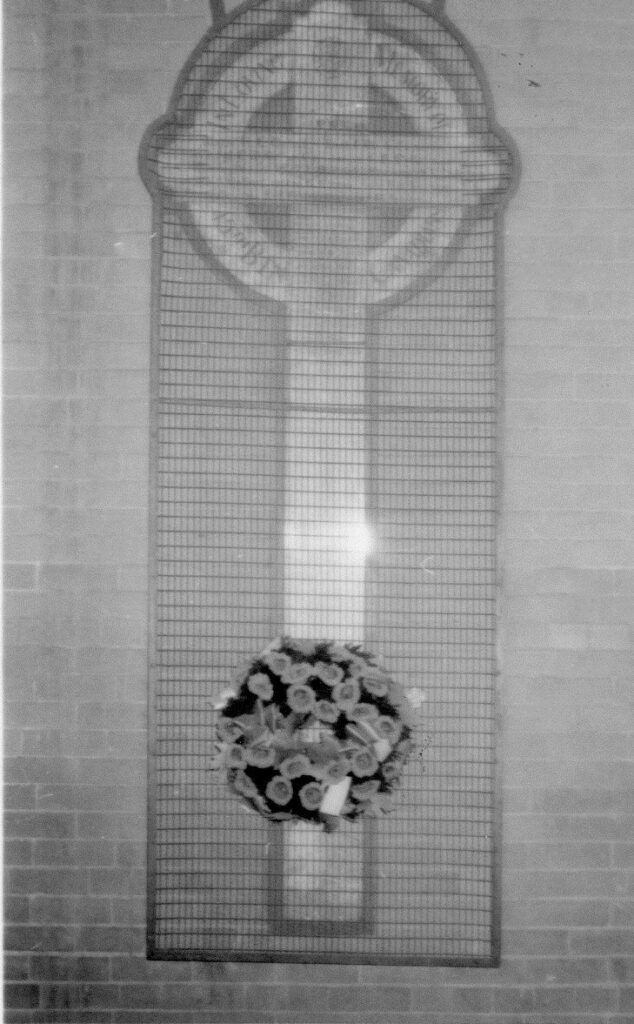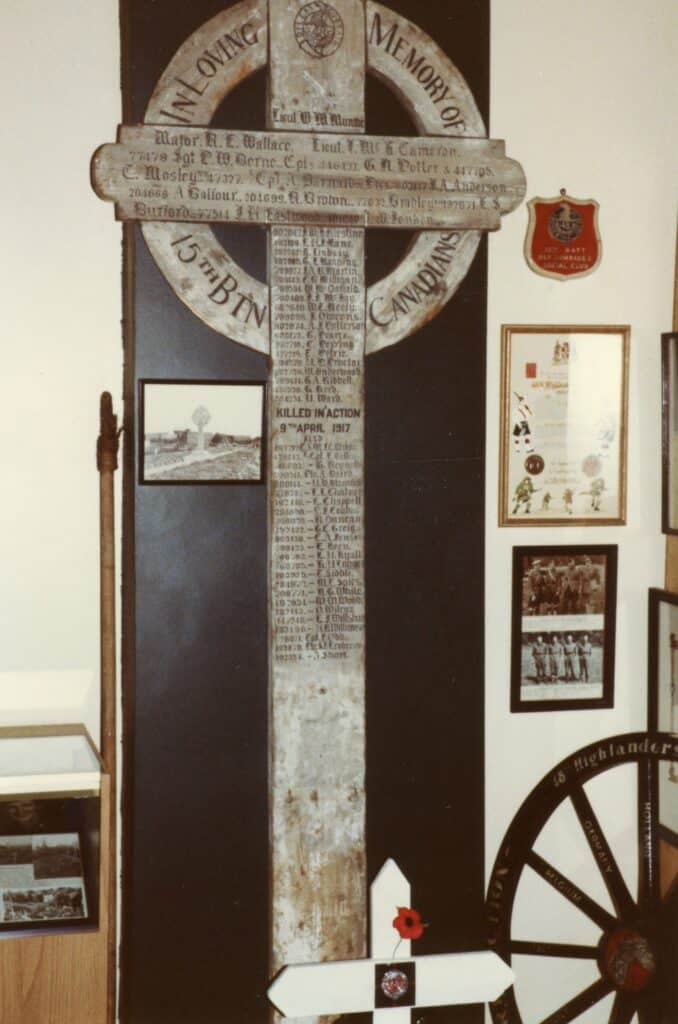CHAPTERS
The story of the Vimy cross
The story of the original cross erected in the days after the assault on Vimy Ridge and how it came to Canada.
The Vimy Cross Returns to France
The Cross returns to France on the occasion of the 100th anniversary of the battle of Vimy Ridge.
The Cross Comes to Canada – again
Details of the ceremony on the occasion of its return to the Regimental Museum
A new cross rises at Vimy
The erection of a granite replica by the 15th Battalion Memorial Project team.
The man who built the cross
The story of the man and how he was finally identified.
In late 1915, while in the line near Hill 63 in the Ploegsteert, Belgium, the 15th Battalion adopted a Celtic style cross to be used for the grave markers of its Fallen where circumstances allowed the unit to mark the places where they were buried. Given the strong historical tradition for the use of Celtic crosses of commemoration in the UK – especially in Scotland – the Celtic pattern adopted by the 15th Battalion is understandable considering the unit’s connections to the 48th Highlanders and the Regiment’s strong Scots identity.
Although adopted in 1915, the Celtic cross does not appear in the historical record until the May-June period of 1916 with burials of men who died while the battalion was in the Ypres salient near Hill 60 in Belgium. Surviving period photographs show that it was used at Lijssenthoek Military Cemetery on the graves of Lieutenant Colonel William Renwick Marshall DSO (Commanding Officer of the 15th Bn), Captain Edward Simpson Botterell, and Sergeant Albert Haley and at Railway Dugouts Cemetery for Corporal William Faultless. Celtic style crosses were used extensively for grave markers by many Canadian units. However, the photographic record indicates that those used by the 15th battalion had a distinctive feature – that being a black mourning ribbon painted on the vertical portion of the cross below the circle.
The Celtic cross does not appear again in the historical record until March 1917 when the 15th Battalion was in the Maison Blanche tunnels near Vimy ridge in preparation for the assault which would take place on April 9th. While there, many men from Canadian units left carvings and inscriptions on the tunnel walls with arguably some the most impressive carvings made by men of the 15th Battalion. One such carving was made in memory of three 15th Battalion men – Privates J. McPhail, T. Milliken and J. McKague – who had all been killed in action during a relief-in-place with the 13th Battalion on March 12th. The commemorative carving is that of a 15th Battalion Celtic cross with their names inscribed.
On 9 April 1917 the 15th Battalion was in the first wave of the 1st Division’s assault against Vimy ridge on the right flank of the Canadian Corp’s line, south of Neuville St Vaast. They approached the start line from Maison Blanche through the Douai subway and their line advance was east towards the Nine Elms south of Thelus. Between 9 and 12 April the 15th Battalion suffered 90 men KIA with another 175 wounded, a number of whom died later of their wounds.
In preparation for the assault, units were assigned specific codes which were to be used by designated Burial Officers to mark the locations selected for the burial of dead. The majority of the 15th Battalion men who fell during the attack were buried in mass graves at locations coded as CA35 and CA39 (C=Canadian; A=1st Division) with 23 in the former and 39 in the latter. CA35 was located approximately half way between the start line and the first objective line while CA39 was located close to the final objective.
The Regimental History and other period documents confirm that, after the recovery of the dead following the assault and the establishing of the two burial sites, a “cross was constructed by the Regimental carpenter of the 15th Battalion and painted with the names of the Officers and men of the Battalion who lost their lives in the battle of Vimy Ridge on 9 April 1917.”
Although not conclusive, the best research to-date done by the 15th Battalion CEF Memorial Project indicates that the cross was erected at CA35. The names on the cross did not include all the battalion’s dead from 9-10 April as some died in Dressing Station’s or hospital’s from their wounds, some were not recovered and others were recovered by the burial parties from other units and buried in other locations. Additionally, as the battalion remained in the area just beyond the ridge until early May, they added the names of several men killed in action to those names already on the cross from 9-10 April. These names brought the total number of names on the cross to fifty-eight. Click the button below to see the photo gallery of those whose names are on the cross.
In 1918, units of the 3rd Infantry Brigade of the 1st Canadian Division were requested to submit their proposals for headstone designs that would eventually be used after the war to mark the graves of their battalion’s dead. This initiative was premature as subsequently the Imperial War Graves Commission (IWGC) took responsibility for all Commonwealth war graves and introduced the standardized headstones seen in their cemeteries today. Canada adopted the Maple Leaf to be used on all headstones of its Fallen. However, it is interesting that documents reveal the design submitted by the 15th Battalion (48th Highlanders) incorporated its Celtic cross.
It is also interesting to note that the 15th Battalion’s cross was even used following the war back in Canada on memorials/graves of men of the Battalion who had died overseas and/or died of wounds back in Canada. The photograph below is of the memorial grave in Hamilton Cemetery of Lt Frank M. Gibson, son of the Lt-Governor of Ontario who had been Killed in Action (KIA) at Hill 63 in August 1915 and is buried in Cite Bonjean Cemetery, France.
The CA35 burial site survived the war intact but the CA39 site was heavily damaged in subsequent fighting. Following the 1918 Armistice and during the post war recovery and concentration of burials by the Commonwealth War Graves Commission (CWGC), the graves at both CA35 and the surviving remains from CA39 were exhumed, collected and reburied in Nine Elms Cemetery. Individual remains that had been in mass graves at CA35 and CA39 were reburied in individual graves with temporary wooden grave markers. The photographic postcard and photograph of that cemetery below both clearly show that the 15th Battalion’s Vimy cross (large cross second from left foreground) had also been relocated to that cemetery.
At some point between 1919 and 1923 the CWGC reconstructed Nine Elms Cemetery into the permanent pattern seen there today and all the temporary wartime grave and memorial crosses were removed. Because CA39 – known then as the Arras Road Cemetery – had been heavily damaged in fighting after April 1917, most of the remains exhumed from that location could either not be found or identified. So those men are commemorated in a special memorial and row of headstones at the front of the cemetery known as the Arras Road Memorial. The men exhumed from CA35 and other battlefield locations were buried under headstones in the cemetery proper.
As the new permanent CWGC cemeteries were being constructed, the Commission made efforts to offer the temporary wood grave markers to families and institutions for the purpose of commemoration.
Although research by the 15th Battalion CEF Memorial Project has not uncovered the precise ‘how’ of the process, period documents show that in 1923 the Regiment was contacted by and subsequently made arrangements to acquire the 15thBattalion’s Vimy cross from the CWGC. It was repatriated to the unit’s University Avenue Armoury in Toronto, installed on the wall above the main parade square, and unveiled in a ceremony on 30 Oct 1925.
When the Armoury was demolished in 1963, the Vimy cross was relocated to the Regimental museum which was co-located with the 48th Highlanders of Canada Old Comrades Club on Church Street in Toronto. The Old Comrades Club and the museum changed locations several times after 1963 and, when the Club closed permanently in 1997, the Regimental museum and the Vimy cross were relocated to St Andrew’s Presbyterian Church Church on Simcoe Street in Toronto where the Vimy cross remains on permanent display.

